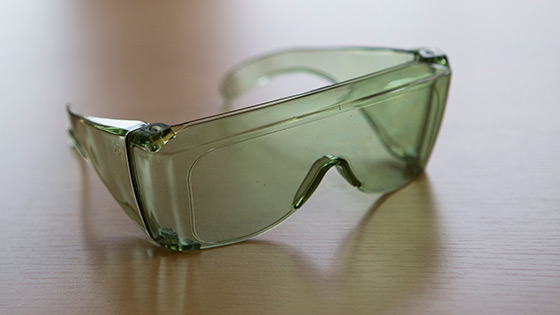Going outdoors when it's bright
Getting out and about is important for your physical and mental wellbeing. One of the challenges you may face is excessive brightness and glare or photophobia. Experts from the RNIB have found that the UVA and UVB rays found in sunlight can be harmful to your vision and can contribute to the cause of some eye conditions.
Here are some helpful hints and tips to help you when you go outside.
On this page
Anti-glare glasses
For those who find glare challenging, anti-glare glasses are a great option. There are several organisations that specialise in anti-glare glasses specifically for people living with sight loss including Optima Low Vision Services, Associated Optical and the RNIB, or you can find your local agency on the Sightline Directory.
If you already wear prescription glasses you can wear anti-glare filters that either clip onto or fit over your glasses, so you don’t need to compromise the correction you get from your prescription.


Coloured lenses
Using coloured filters and tints in lenses can help improve contrast and the ability to view certain objects for some people with certain eye conditions. Therefore, some people may benefit from having two or more pairs with different tints and/or colours for different times of day, light levels and/or different weather.
What the difference between a filter and a tint?
- Tints reduce the level of light that can enter the eye, so the darker it is the less light can get in. The darker tints may well reduce glare and discomfort but could also reduce what you see as everything is darker.
- Filters will filter out the harmful light that causes glare whilst letting most of the useful light through.
If you need more details on differences between filters and tints please see the expert information at Filters & Tints - What is the Difference? by Optima Low Vision Services.
Sunglasses
Some people find a good quality pair of sunglasses is all they need to resolve the glare issue, as their lenses use tints or filters. They may also help with improving contrast.
Please remember to follow the guidelines around cleaning and disinfecting any items posted to you.
Peaked cap or visor
Another solution could be to wear a peaked cap or visor to reduce glare.
Going out at different times of the day
You could try going out either early in the morning or at dusk, when the light is not as bright. To test which time of day is best for you, you could practise in your garden or in a safe, confined area first.
Making your sight loss clear to others
When out and about during this challenging time, you may want to make your sight loss clear to others. You may not be able to see other people in time to maintain social distancing. If you let other people know that you may not be able to see them, they will know they need to move instead.
If you don’t usually need to use a cane, we would suggest carrying one as a symbol to others. They can be provided by your local support agency, you can find your local agency. They can also be purchased from the RNIB shop.
You could also consider wearing clothing that states you have a vision impairment, such as a visual impairment badge, a high visibility armband or hi vis bib. This may also be helpful if you visit shops.
For specific recommendations on equipment and training you can contact your local professional agency that supports people living with sight loss. The agency will vary in each local area so find your local support network/agency.